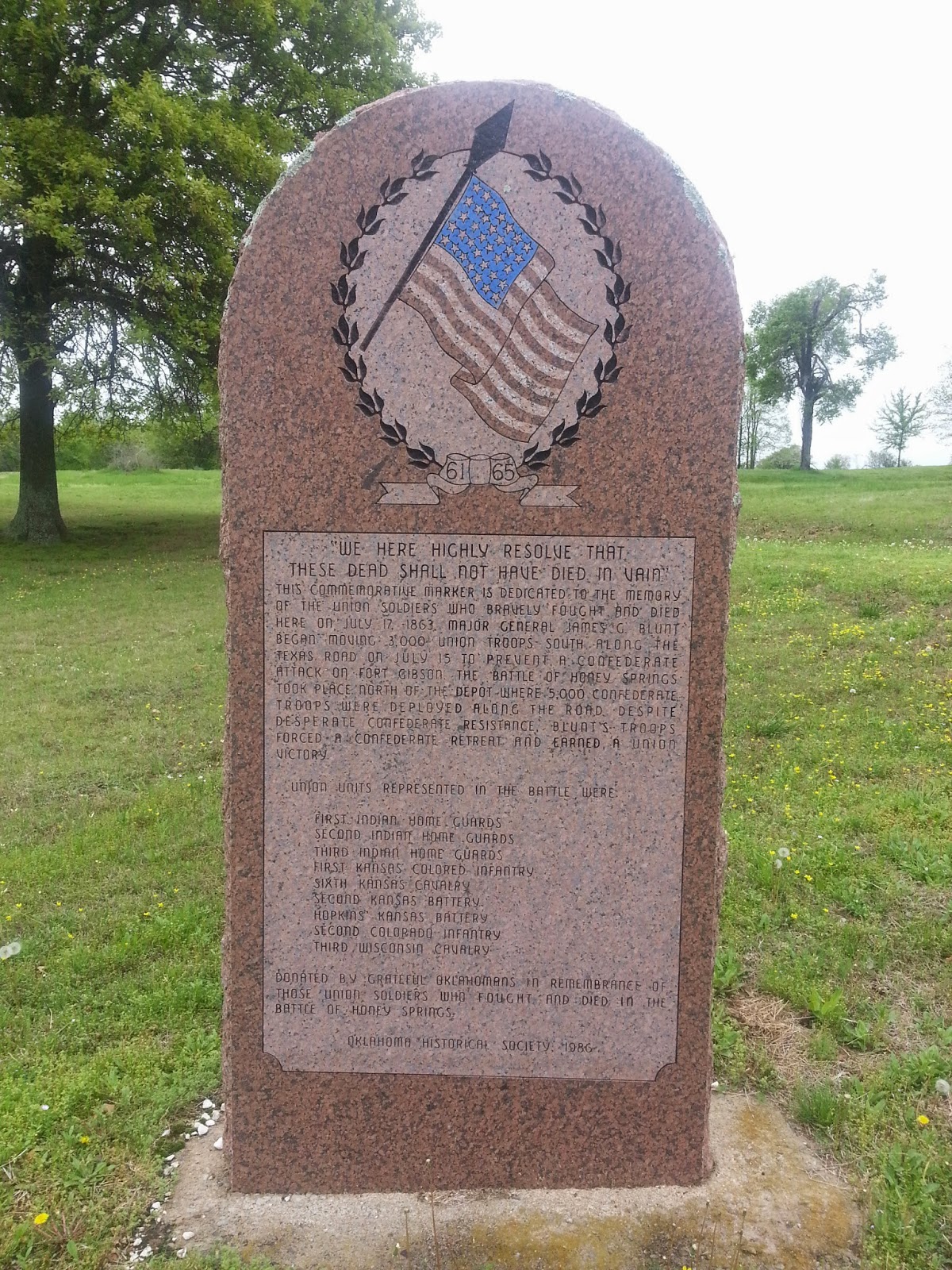Many of you know that Sid is a huge history buff, with the Civil War being one of his favorite subjects. Given the proximity of an actual battlefield, there was no doubt that this was going to be a stop on itinerary. Not easy to find, the Honey Springs Battlefield Historic Site was located between Checotah, OK and Rentiesville, OK, off Highway 69 and down several country roads. But once we got there, it turned out to be an important historical site. The visitor center was not much to look at...
Honey Springs Battlefield Visitor Center (with its' fancy bathrooms!)
...but the curator we found there was amazing! Admission was free and on a rainy day in the middle of the week, we were the only visitors and we got one of the best presentations we could have hoped for. He not only recounted the actual events of the battle but also engaged us in guessing the motives for many of the decisions made by both sides that day. The young man was not only knowledgeable but passionate about his history!
The Battle of Honey Springs was the largest Civil War battle ever fought in Indian Territory and took place on July 17, 1863. Union troops occupying Ft Gibson (across the Arkansas River from Muskogee) learned of an impending attack on the fort by Confederate soldiers. Outnumbered by 2 to 1 (3000 Union, 6000 Confederate), Major General James G. Blunt decided to go on the offensive and preemptively attack the Confederate forces waiting in the Honey Springs Depot, led by Brigadier General Douglas H. Cooper, before they could be reinforced by an additional 3000 troops coming from Kansas. A fierce battle ensued and the Union prevailed. Anywhere from 200 - 400 soldiers were killed or wounded, but the actual number could never be ascertained. The battle and resulting victory opened the way for the capture of much of Arkansas and marked the last large Confederate resistance in Indian Territory. It was also significant in that it was one of the earliest engagements by a black regiment (1st Kansas Colored Infantry) that proved their ability as fighting men.
Honey Springs settlement has long since disappeared, but the 1100 acre historic site contains 6 extensive walking trails through prairie and woods, with interpretive signs that tell you what happened at each location. Parts of the original road (originally Osage Trace, then called Texas Road during the Civil War era, now replaced by Highway 69) still exist, as well as Elk Creek, which played a key role in the battle. The settlement is marked by monuments, erected in the 80s, to honor the Confederate, Union, "Colored" and Indian regiments.
Indian monument
Honoring the 1st Kansas Colored Regiment soldiers
Confederate monument
Union monument
Not content to be lumped in with the other regiments, Texas had to have it's own monument, honoring the soldiers from that state!
I've seen other Civil War battlefields and this one was documented as well as any I've seen. The interpretive signs are very worn and some unreadable, but the curator gave us a printed guide (normally a $3 purchase) to follow that included everything on the signs and more. He said that they are in the process of building a new visitor center and upgrading all the exhibits, funding permitting, of course. It was raining when we visited, but it would be a lovely place to spend a sunny afternoon. I'm so glad that I live in a country that recognizes the importance of its history and makes it available to anyone interested in learning about it.
Until next time...







No comments:
Post a Comment